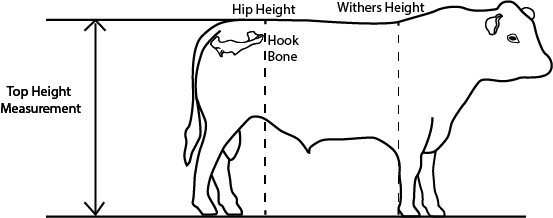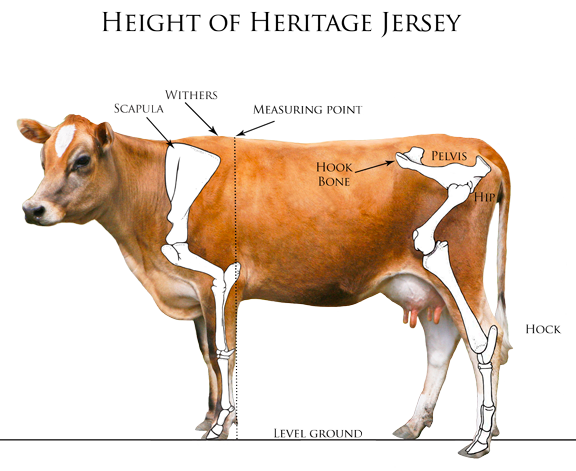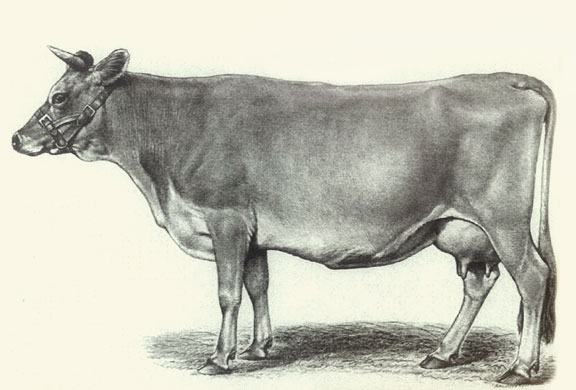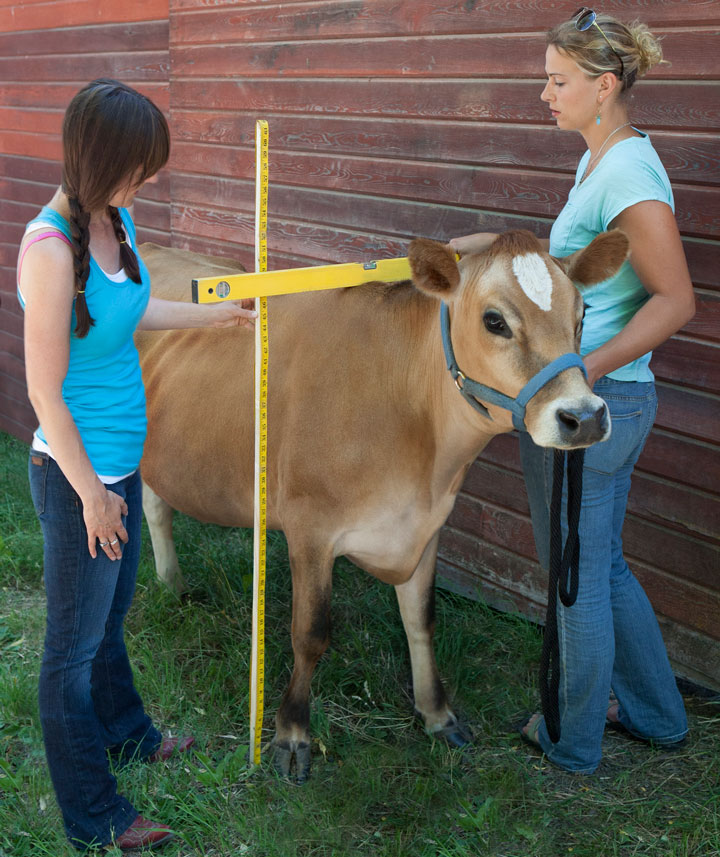Measuring Your Jersey
![[flourish]](/images/flourish-txt_mobius.png)
Obviously, the height of an animal matters, as evidenced by the number of people attracted to the idea of miniature cattle. Height of an animal should be a function of the top of the animal (its back). Seems simple enough, right? But here’s an example of measuring gone awry: A cattle breeder who used line-breeding to “invent” and trademark new varieties of miniature cattle came onto the scene in the mid-’80s, promoting the notion that height measurements should be taken at the hook bone, rather than using the time-tested method for height taken at the back above the front shoulders—the withers. If he’d promoted the idea that back height should be taken above the hook bone on the back (commonly called a hip-height measurement) instead of at the foreleg, not a problem. They both give you a top height, just at a different axis along the body. (Either method eliminates interference with the neck hump common in mature bulls.)

We use the back of the foreleg as the point for determining where a height measurement is taken. In other words, to determine the height of an animal, you determine a standard place along the body, hook bone or foreleg, go UP from there, and take a measurement from the top of the animal’s back to the ground. But there are registries and miniature cattle breeders who continue to use the hook bone itself as the final destination point, which is odd because where on the hook bone do you put your measuring stick before heading down to the ground for your supposed animal height? (This is like someone deciding to redefine the height of people by using the Adam’s apple. Do you try to feel and find the top lump of the Adam’s apple? Or do you use the most prominent protrusion that pokes out?)
When I measured one of my bulls using the hook bone itself (using the top outer-most point of his hook bone), he was suddenly 4″ shorter than his actual height. Is the confusion intentional for the purpose of promoting the idea of miniature cattle? Several years ago, I purchased a “miniature” calf that has grown into what I would call a full-size cow, measuring 51¼″ at the withers.
Because Jersey cattle on the Isle of Jersey have always been measured at the withers, our cattle registry uses a height measurement taken at the withers. I’ve asked one of my Heritage Jersey cows (mid-size, 47¼″ at the withers) to demonstrate for you.

And here’s a late 19th-century drawing of a Jersey cow for you to compare then and now. The average height at the withers of a mature Jersey cow back then was 46″ (117 cm), with weight ranging from 772 to 937 pounds (350 to 425 kg). Mature bulls were 50″ (127 cm) and 1,102 to 1,323 pounds (500 to 600 kg).

Here’s How to Take a Withers Measurement on Cows and Bulls
You can buy a cattle measuring stick (www.enasco.com) or make your own. (Our homemade version requires two people in order to get an accurate measurement.)

Using a cattle measuring stick, find a level spot on solid ground for your cow to stand on. Assemble the measuring stick and place it even with the back of the foreleg. Slide the crossbar down until it rests on the withers (point between the shoulder blades). Read the measurement from the bottom of the crossbar.

To make your own measuring stick, use a 1″ x 1″ piece of wood 62″ long, a plastic seamstress measuring tape, and a carpenter’s level. Glue or tape the measuring tape to the wood. If the measuring tape is longer than the stick, fold it over the top and tape it down on the back side to hold it in place. Use a carpenter’s level as a crossbar to take the measurement. Find a level spot on solid ground for your cow to stand on. Place the stick even with the back of the foreleg and place the level across the cow’s withers, making sure the bubble of the level is centered. Read the measurement from the bottom of the level.
